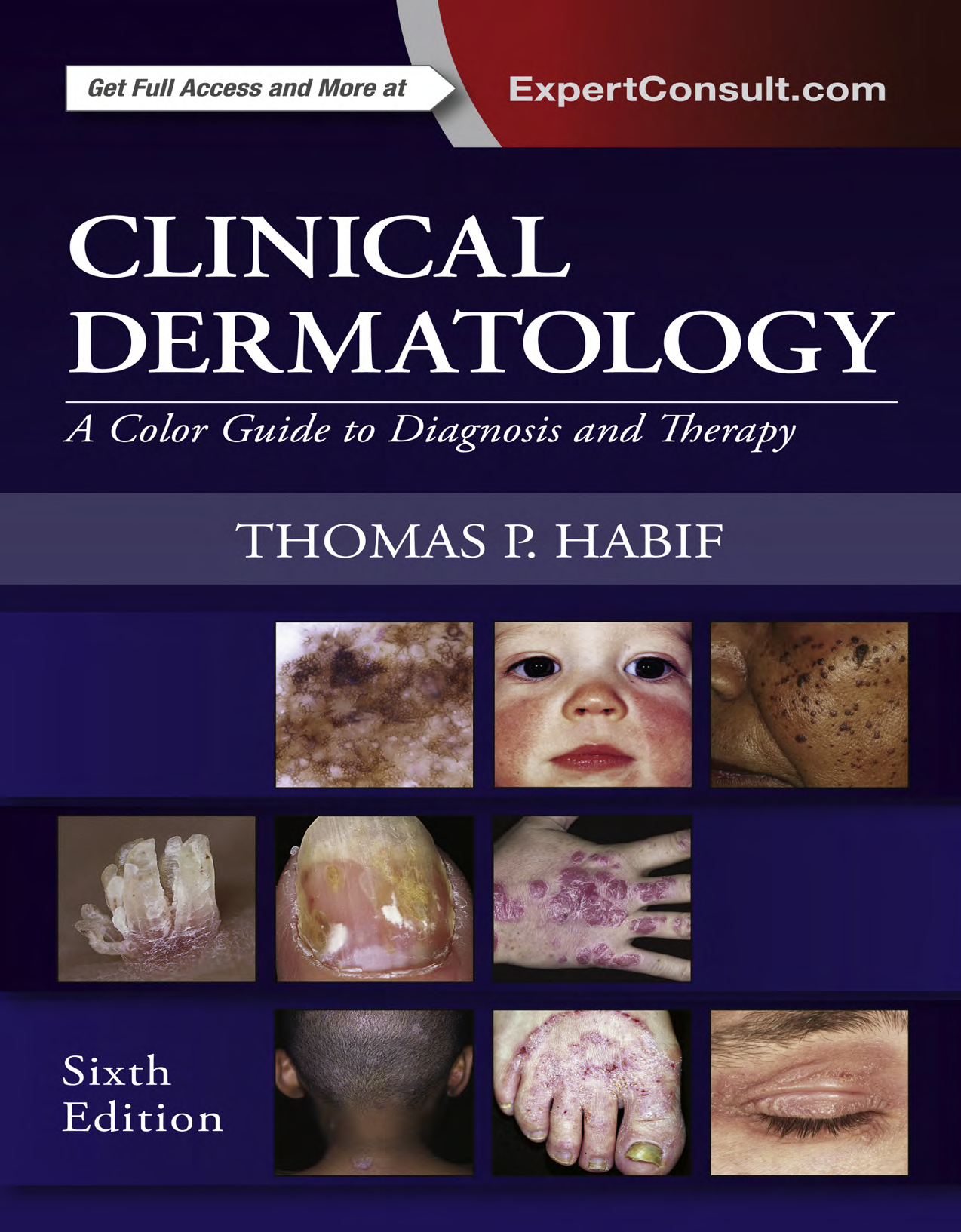Name: Clinical Dermatology: A Color Guide to Diagnosis and Therapy
Edition: 6th
Author: Thomas P. Habif
Subject: Dermatology
Language: English
Publisher: Elsevier

Brief Introduction
The sixth edition of Clinical Dermatology: A Color Guide to Diagnosis and Therapy is optimized for electronic delivery. I use the Disorders Index to rapidly find specific diseases. The images hold up quite well when enlarged. Access is adequate on big screen Android phones and the Apple iPhone. I still prefer the print version with two full pages of information displayed but I now find myself frequently using the electronic version on my big phone, which I carry in my lab coat. Having a “book in a pocket” plus numerous other resources is pretty nice.
Students should learn the primary and secondary lesions and look at every page in the Regional Differential Diagnosis Atlas at the end of Chapter 1.
Study Chapters 20 (Benign Skin Tumors), 21 (Premalignant and Malignant Nonmelanoma Skin Tumors), and 22 (Nevi and Malignant Melanoma). Skin growths are common, and it is important to recognize their features. House officers are responsible for patient management. Read Chapter 2 carefully, and study all aspects of the use of topical steroids. It is tempting to use these agents as a therapeutic trial and ask for a consultation only if therapy fails. Topical steroids mask some diseases, make some diseases worse, and create other diseases. Do not develop bad habits; if you do not know what a disease is, do not treat it. The diagnosis of skin disease is deceptively easy. Do not make hasty diagnoses. Take a history, study primary lesions and the distribution, and be deliberate and methodical. Ask for help. With time and experience you will feel comfortable managing many common skin diseases.
Contents
1 Principles of Diagnosis and Anatomy
2 Topical Therapy and Topical Corticosteroids
3 Eczema and Hand Dermatitis
4 Contact Dermatitis and Patch Testing
5 Atopic Dermatitis
6 Urticaria, Angioedema, and Pruritus
7 Acne, Rosacea, and Related Disorders
8 Psoriasis and Other Papu losquamous Diseases
9 Bacterial Infections 329
10 Sexually Transmitted Bacterial Infections
11 Sexually Transmitted Viral Infections
12 Warts, Herpes Simplex, and Other Viral Infections
13 Sup erficial Fungal Infections
14 Exanthems and Drug Erup tions
15 Infestations and Bites
16 Vesicular and Bullous Diseases
17 Connective Tissue Diseases
18 Hypersensitivity Syndromes and Vasculitis
19 Light-Related Diseases and Disorders of Pigmentation
20 Benign Skin Tumors
21 Premalignant and Malignant Nonmelanoma Skin Tumors
22 Nevi and Malignant Melanoma
23 Vascular Tumors and Malformations
24 Hair Diseases
25 Nail Diseases
26 Cutaneous Manifestations of Internal Disease
Excerpts
…
A wide variety of topical medications are available for treating cutaneous disease (see Formulary). Specific medications are covered in detail in the appropriate chapters, and the basic principles of topical treatment are discussed here.The skin is an important barrier that must be maintained to function properly. Any insult that removes water, lipids, or protein from the epidermis alters the integrity of this barrier and compromises its function. Restoration of the normal epidermal barrier is accomplished with the use of mild soaps and emollient creams and lotions. There is an old and often-repeated rule: “If it is dry, wet it; if it is wet, dry it.”
Page 75
…
Screenshots





Download Links
The download links are hidden, you should sign-in and pay the fee(diamonds) or points to get the links.